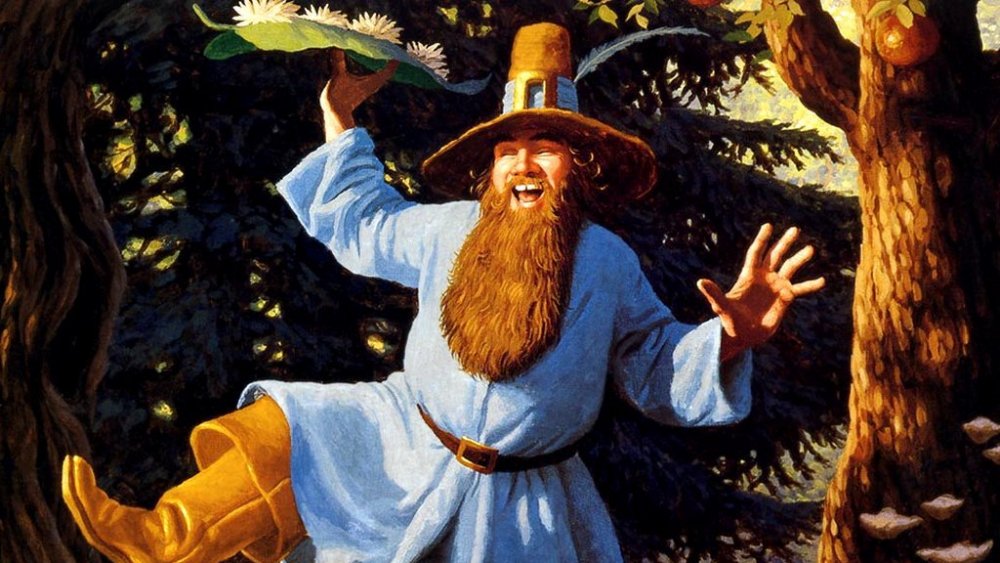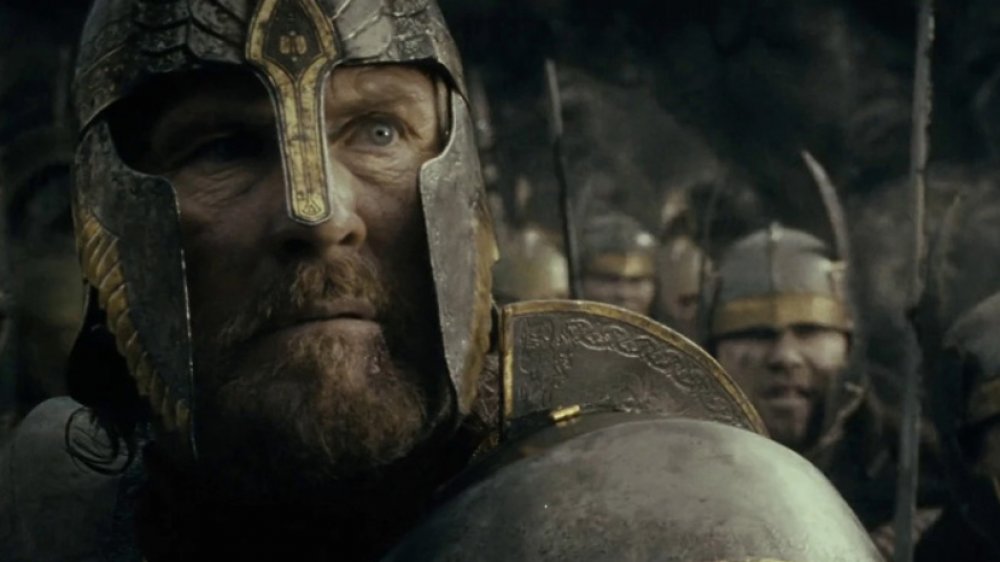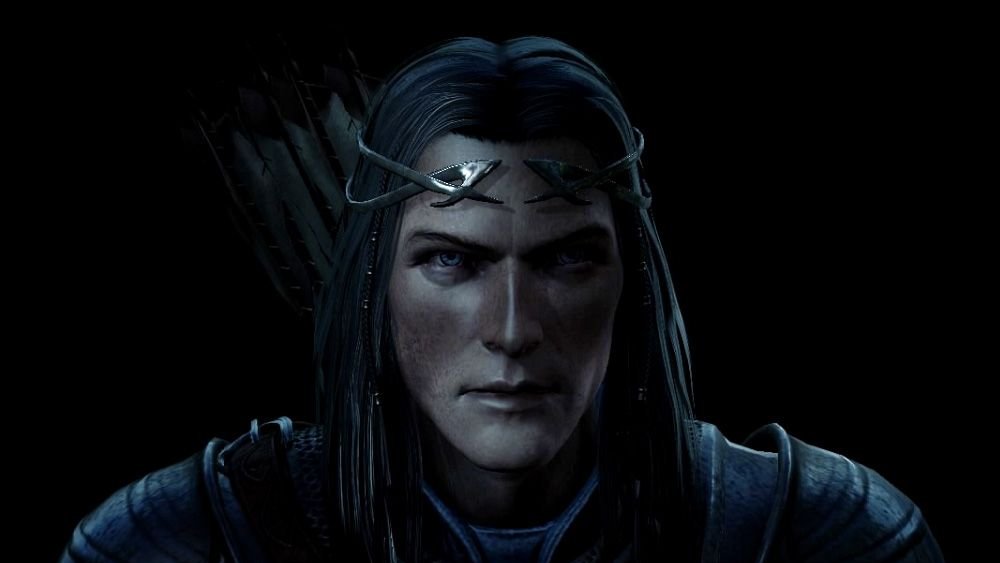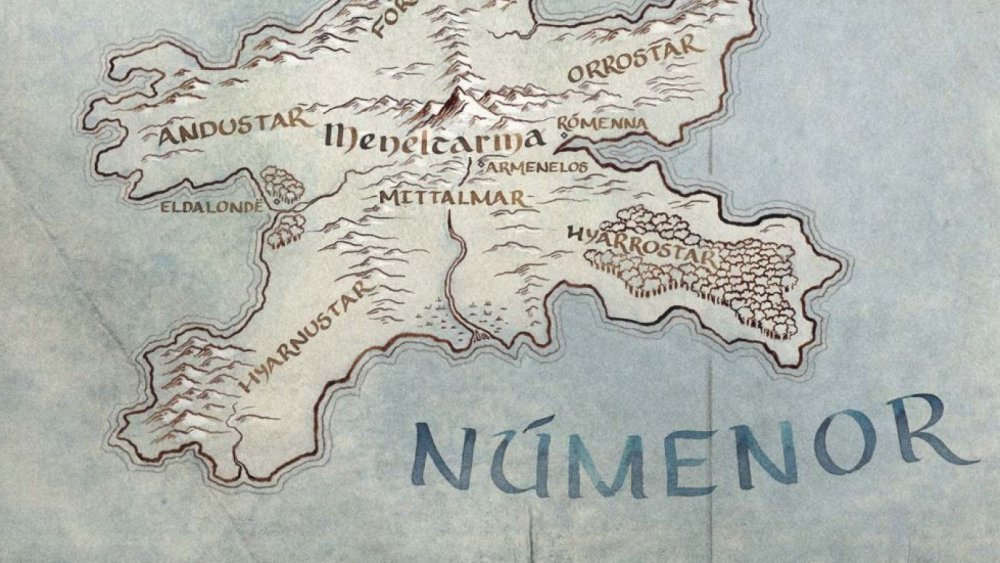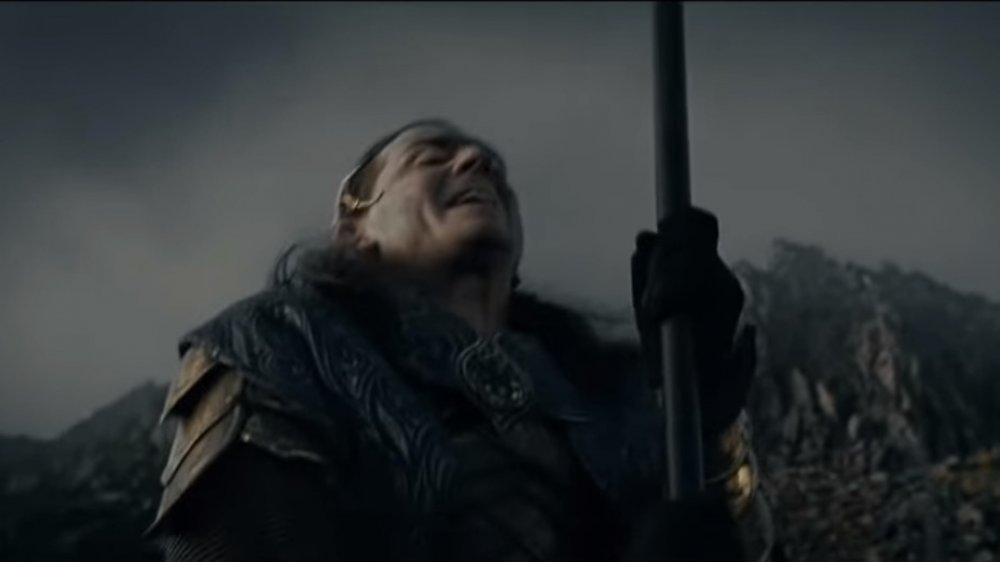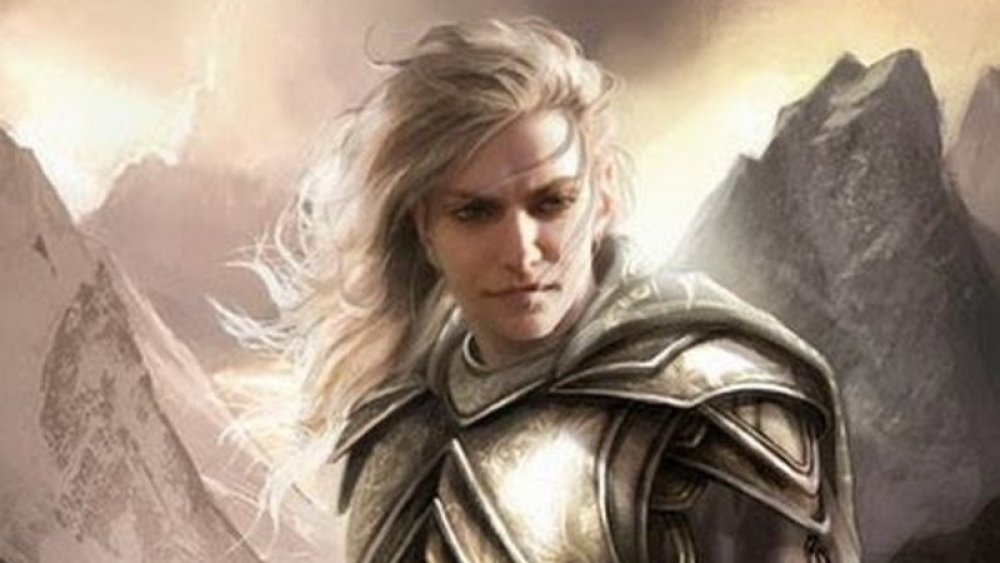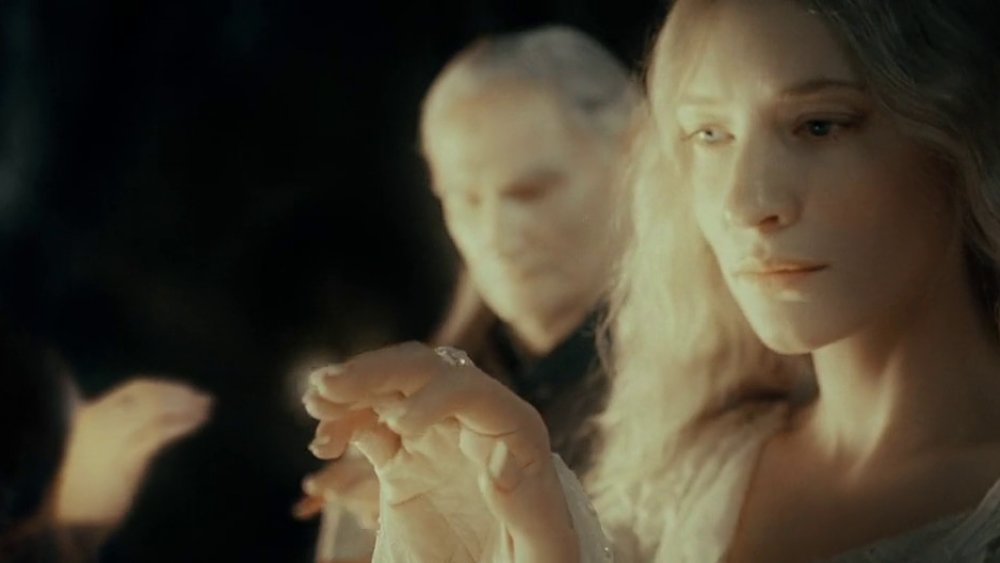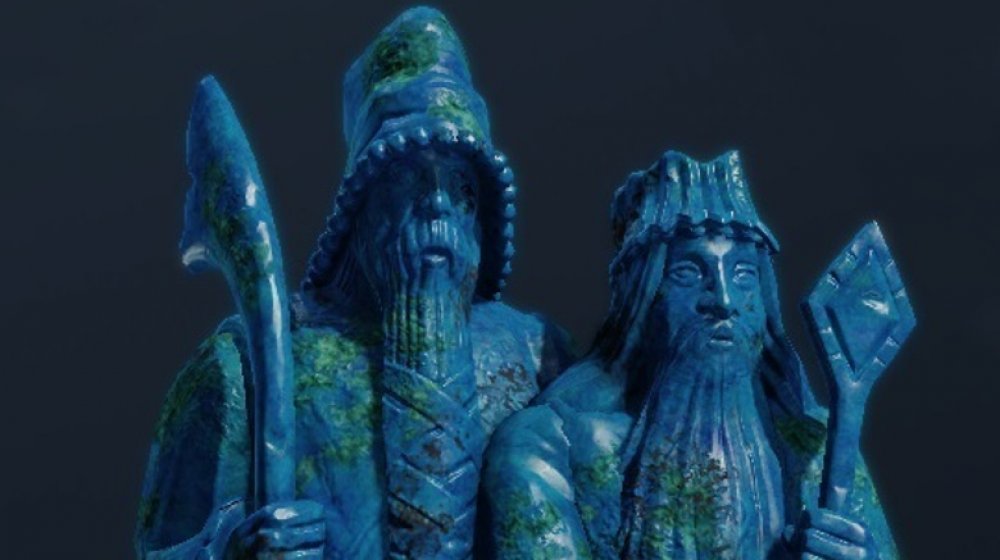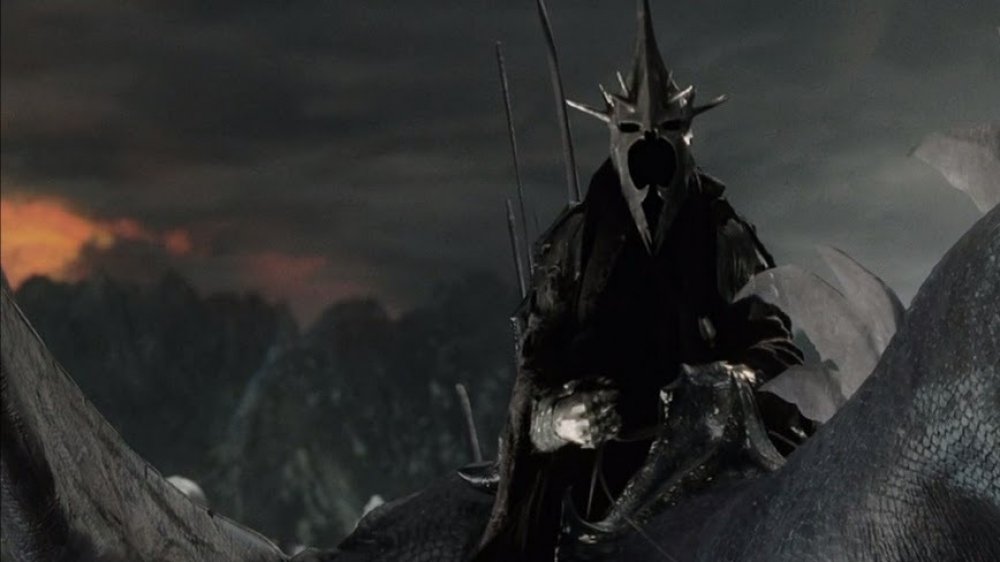Lord Of The Rings Characters Fans Want To See In Amazon's Prequel
In 2017, Amazon announced that its Prime streaming video service would soon be home to a truly epic project: A TV series based on J.R.R. Tolkien's massive Lord of the Rings legendarium. While Lord of the Rings itself has already been adapted for live action, quite successfully in the form of Peter Jackson's Oscar-winning film trilogy, this series will be set many years before those events.
We now know that Amazon's Lord of the Rings prequel series will take viewers to the Second Age, a period of time that ended nearly 3,000 years before Frodo Baggins was born and culminated in the War of the Last Alliance, which saw Isildur cut the One Ring from Sauron's hand in battle. The Second Age itself is also vast, covering a little more than 3,400 years of history that included wars, the rising and falling of kingdoms, and of course the creation of the Rings of Power, including the One Ring to Rule Them All. That's a vast canvas for Amazon to work with, and that means a lot of different characters from Tolkien lore could pop up. Here are our picks for who we'd most like to see, with a particular emphasis on characters who haven't already starred in a big-budget movie.
Tom Bombadil
Ask any diehard fan of J.R.R. Tolkien's fiction what the greatest sin of The Lord of the Rings film trilogy was, and there's a good chance they'll tell you it's the absence of Tom Bombadil. Decades after his creation, after countless readers poring over everything we know about him and his place in the story, Bombadil's presence in The Lord of the Rings continues to inspire a sense of fascination and awe among fans, and while Frodo Baggins' meeting with him in The Fellowship of the Ring didn't really have a solid place in the film, Bombadil himself could have a presence in the upcoming TV series.
When he's introduced in The Lord of the Rings, Bombadil describes himself as, among other things, "eldest," suggesting that he might be the first living thing to exist in Arda (Tolkien's name for the physical world in his legendarium). He appears to be a good and kind being, but also doesn't seem particularly bothered about taking a side in various conflicts. He also seems to have an extraordinary, magical command over nature, while also being immune to various magics himself. Based on his encounter with Frodo, he's even apparently immune to the effects of the One Ring. Tom Bombadil is a character that shouldn't be overexplained or deconstructed, but a small appearance in live action at last could make a lot of people very happy.
Elendil
Elendil is a character who appears for only a moment in the prologue to the Lord of the Rings films, as the High King of Gondor and Arnor who helped forge the Last Alliance that was able to defeat Sauron at the end of the Second Age. That's enough to make him a legend, but the story of how Elendil got to that point is what makes him one of the most compelling characters in the Second Age.
Elendil lived in the legendary kingdom of Numenor at a time when its last king, Ar-Pharazôn, was corrupted by Sauron. Even as the king led Numenor and its people astray, Elendil remained faithful to the Valar and the old ways of Numenor, and when the kingdom fell, his life and those of his sons and followers was saved. He sailed to Middle-earth, founded the kingdoms of Gondor and Arnor, and set up a legacy for men on that continent that carried all the way through to Aragorn at the time of The Lord of the Rings. It would be great to see this noble, beloved king at the height of his power, or even resisting Sauron's initial allure.
Celebrimbor
Celebrimbor is one of the most important figures in the history of the Rings of Power themselves, and while he didn't appear in Jackson's films, his spirit is a major part of the Middle Earth: Shadow of Mordor and Shadow of War games because of his closeness to the Rings. An Elven smith in the Second Age, Celebrimbor was a skilled craftsman who was there when Sauron came upon the Elves in his Annatar guise and began teaching them how to make rings. Though he didn't exactly trust Annatar, he did participate in the crafting of rings, and personally made the three Elven Rings of Power. When Sauron revealed his treachery, Celebrimbor worked to hide the Three Rings from the Dark Lord so he could never wield their power. He died under torture, after refusing to give up the location of the Three to Sauron. If you're going to touch on the story of how the Rings of Power came to be, Celebrimbor has a major role to play there.
Sauron as Annatar
If you're a fan of the Lord of the Rings books and films, you're obviously already very familiar with Sauron. He's the main antagonist of J.R.R. Tolkien's novel and Peter Jackson's film trilogy, and proved so vital to the overall mythology of Middle-earth that he was retroactively inserted into The Hobbit as "The Necromancer" Gandalf was investigating at the time. It might seem like overkill to put the Dark Lord in yet another story from this world, but there's a good reason to bring Sauron back.
Sauron is a character older than the physical realm of Middle-earth itself, an ancient spirit created as one of the Maiar alongside other vastly powerful beings like Gandalf and Saruman. That means you can find some version of him in almost any part of the Tolkien timeline, but in the Second Age he was particularly devious. To forge the Rings of Power in the first place, Sauron took on a beautiful, more angelic form, re-named himself Annatar, and called himself the "Lord of Gifts" to trick the Elves into making rings with him. Seeing that version of Sauron, beautiful and perhaps even sexy on the outside while harboring a darker purpose, could lend a lot of intrigue to the new series.
Ar-Pharazôn
Though he wasn't the original Dark Lord of Tolkien's legendarium — that would be Morgoth, who terrorized the world in the First Age — Sauron has been around since the very beginning of time in that world, and has therefore taken many forms and done many deceitful, corrupting things that have only been briefly touched on in adaptations so far. The fall of Numenor, the once great island kingdom of men west of Middle-earth, is one of these.
Sauron's corruption of Numenor began when he was taken prisoner by a massive Numenorean force led by their proud king, Ar-Pharazôn, but the Dark Lord wasn't beaten. Once in Numenor, he set out to poison the king's mind, and exploited Ar-Pharazôn's fear of death by claiming that his old master, Morgoth, could make him immortal. As a result, the corrupted king constructed temples to Morgoth, betraying the Valar who had helped establish Numenor in the first place. This led to the downfall of Numenor and the foundation of the kingdoms of Gondor and Arnor in Middle-earth, where the last remaining faithful Numenoreans sailed. Ar-Pharazôn's story is a tragedy of pride, corruption, and hubris, and would make for great drama in Amazon's series.
Gil-galad
We've already talked about Elendil, the survivor of Numenor who helped found and once ruled the kingdoms of Arnor and Gornor. He was the great leader of Men in Middle-earth near the end of the Second Age, and formed the Last Alliance with the Elves to defeat Sauron. The other half of that alliance, the Elves, was led by Gil-galad, and while we also glimpsed him in the Lord of the Rings film prologue, there is much more to his story.
For one thing, Gil-galad was the High King of Elves in Middle-earth at the time of the Last Alliance, so he's an extremely important part of the final war of the Second Age as both a political and military commander. For another, he was a very important mentor figure to Elrond, who was his herald. Then there's his history with the Rings of Power. When Sauron came around as Annatar the Lord of Gifts, offering to teach the Elves how to make rings, Gil-galad immediately saw some kind of treachery at work, and declined to associate with him. This kept him free of Sauron's influence, and when Celebrimbor was forced to hide the rings Gil-galad played a key role in keeping them safe before eventually passing them on. He died at the Siege of Barad-dur at the end of the Second Age, so showing us what he was like at the height of Middle-earth power could be a real treat for fans.
Glorfindel
Peter Jackson's Lord of the Rings trilogy is an attempt to adapt a sprawling epic fantasy novel full of digressions, backstories, and characters we only meet once. With that in mind, certain streamlining had to take place, and that unfortunately included the removal of the Elven warrior Glorfindel from the story. In the book, Glorfindel is the one who fights off the Nazgul in an effort to get Frodo into Rivendell after he's poisoned by a Morgul blade. In the film, this task is given to Arwen, to both streamline the story and beef up her character to be more than Elrond's daughter and Aragorn's love interest.
An epic TV series could be the perfect place to give Glorfindel his due and explore some of his fantastic history. He was an Elven warrior of the First Age who died a hero in the fight against Morgoth, and went down swinging against a Balrog. He was so noble, in fact, that the Valar decided to eventually give him a new body and send him back to Middle-earth with powers that the average Elf didn't have. His return happened in the Second Age, and what happened next could end up as a great part of a TV series.
Círdan
Círdan is one of the oldest and most important Elves in all of Middle-earth lore, and that granted him a brief cameo appearance in the Lord of the Rings film trilogy, as a ring-bearer in the prologue and at the Grey Havens in the end. That said, there's so much more to his story that a TV series could explore.
Círdan was born before the First Age, and by the time he finally left Middle-earth in the Fourth Age he'd been the oldest elf on the continent for millennia. In the Second Age, he established the Grey Havens in the west of Middle-earth as a master shipwright who loved to live near the water. When Sauron attempted to deceived the Elves into crafting the Rings of Power, Círdan was one of the Elven leaders who resisted the temptation, and when the Three Elven Rings were hidden from Sauron, he was tasked with bearing one of them. He fought in the War of the Last Alliance right up until its end, and in the books it was he, not Elrond, who tried to convince Isildur to destroy the One Ring. He led an amazing, long life, and more of it deserves to be explored on the screen.
The Blue Wizards
When we first meet Gandalf in J.R.R. Tolkien's The Hobbit, he is presented as a wizard, but perhaps a human one, like someone from countless other fantasy stories who's lived a long life practicing magical arts. Over time, though, Tolkien laid out a complex mythology for Gandalf and his wizard brethren, and revealed them to be Maiar spirits sent by the Valar 1,000 years into the Third Age to aid against the rise of Sauron. The Lord of the Rings features Gandalf the Grey and Saruman the White in major roles, while Radagast the Brown plays a slightly smaller part.
But there were two other wizards who didn't get roles to play in The Lord of the Rings or The Hobbit, and whose background and deeds in Middle-earth remain rather vague. In fact, it's possible that these Blue Wizards — known as Alatar and Pallando — arrived before the mission was handed down to the others, sometime in the Second Age. Hoping for their presence in the series might be in vain, but there's so much untapped potential in the idea of other wizards and what they might have been up to that it seems like an opportunity that shouldn't be passed up.
The Witch-king of Angmar
Most of this list is devoted to characters who either haven't appeared in a live-action film based on Tolkien's work or at least have only appeared in them for a moment or two. That's not the case with the Witch-king of Angmar. As Sauron's second in command during the War of the Ring, he's a major presence in the films, particularly in The Return of the King, and we get to see him riding into battle on behalf of his dark master more than once. We even see his death scene courtesy of Eowyn. What we don't ever get to see, apart from a few hints, is exactly how the Witch-king became the Witch-king.
We know from the poem that opens The Lord of the Rings that Three Rings were given to Elves, Seven to the Dwarves, and Nine to the Men. We also know from Tolkien's various writings on the subject that only the leaders of Men who bore the Nine were fully corrupted by Sauron's influence. They became the Nazgul, a.k.a. the Ringwraiths, and the Witch-king was their leader. What we know considerably less about is who the Witch-king was before he was corrupted by Sauron, and why exactly he was the one among the Nine who rose to that particular position of honor. It's a mystery the series could shed some light on in a really interesting way.

